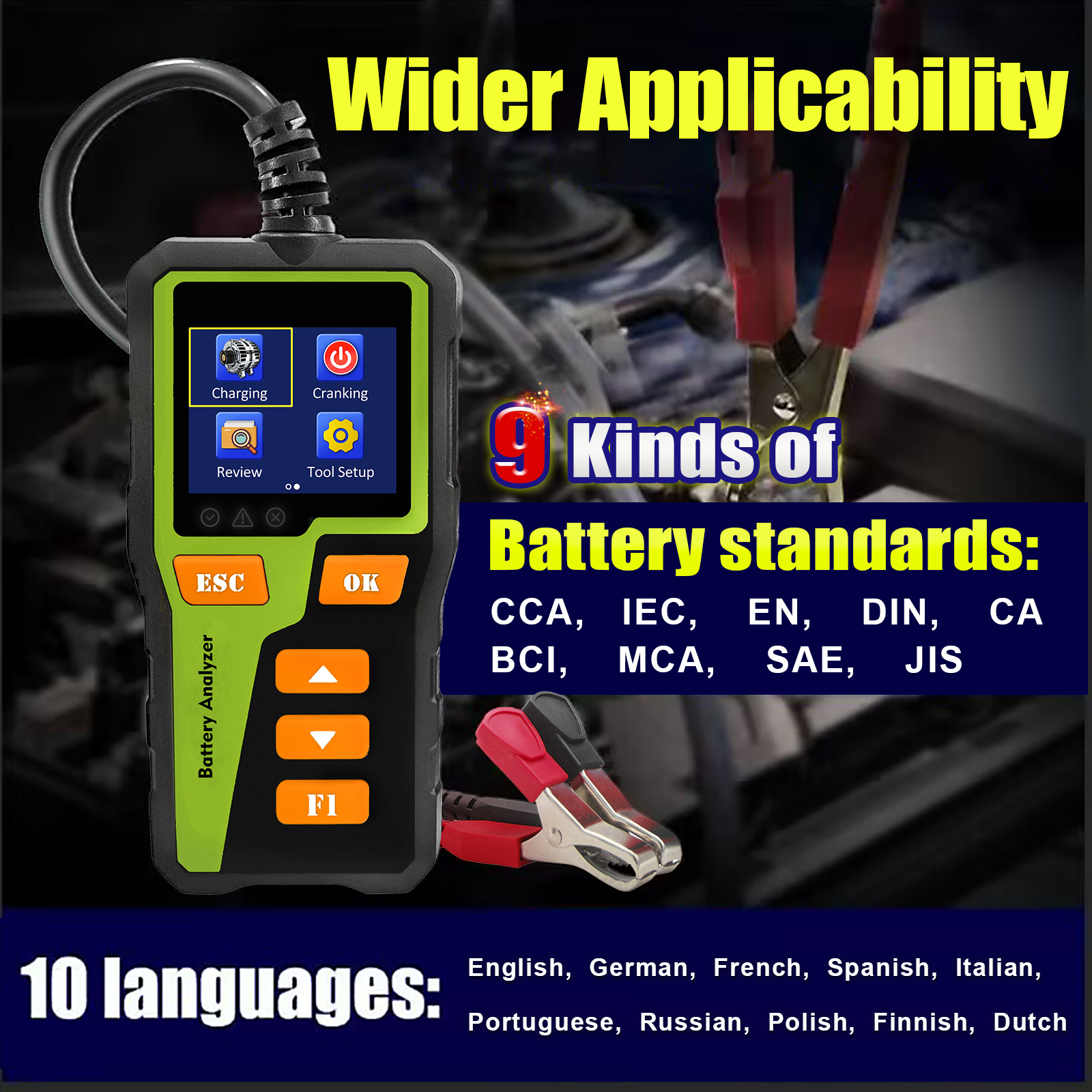1. Lead-Acid Batteries
- Description: The most common type for internal combustion engine (ICE) vehicles, composed of six 2V cells in series (total 12V). They use lead dioxide and sponge lead as active materials with sulfuric acid electrolyte.
- Subtypes:
- Flooded (Conventional): Requires periodic maintenance (e.g., electrolyte refilling).
- Valve-Regulated (VRLA): Includes Absorbent Glass Mat (AGM) and Gel batteries, which are maintenance-free and spill-proof139.
- Standards:
- Chinese GB: Model codes like 6-QAW-54a indicate voltage (12V), application (Q for automotive), type (A for dry-charged, W for maintenance-free), capacity (54Ah), and revision (a for first improvement)15.
- Japanese JIS: E.g., NS40ZL (N=JIS standard, S=smaller size, Z=enhanced discharge, L=left terminal)19.
- German DIN: Codes like 54434 (5=capacity <100Ah, 44Ah capacity)15.
- American BCI: E.g., 58430 (58=group size, 430A cold cranking amps)15.
2. Nickel-Based Batteries
- Nickel-Cadmium (Ni-Cd): Rare in modern vehicles due to environmental concerns. Voltage: 1.2V, lifespan ~500 cycles37.
- Nickel-Metal Hydride (Ni-MH): Used in hybrid vehicles. Higher capacity (~2100mAh) and lifespan (~1000 cycles)37.
3. Lithium-Based Batteries
- Lithium-Ion (Li-ion): Dominant in electric vehicles (EVs). High energy density (3.6V per cell), lightweight, but sensitive to overcharging and thermal runaway37.
- Lithium Polymer (Li-Po): Uses polymer electrolyte for flexibility and stability. Less prone to leakage but requires precise management37.
- Standards:
- GB 38031-2025: Specifies safety requirements for EV traction batteries, including thermal stability, vibration, crush, and fast-charge cycle tests to prevent fire/explosion210.
- GB/T 31485-2015: Mandates safety tests (overcharge, short-circuit, heating, etc.) for lithium-ion and nickel-metal hydride batteries46.
Importance of Battery Health for Automotive Safety
- Reliable Starting Power:
- A degraded battery may fail to deliver sufficient cranking amps, leading to engine start failures, especially in cold conditions. Standards like BCI’s CCA (Cold Cranking Amps) ensure performance in low temperatures15.
- Electrical System Stability:
- Weak batteries cause voltage fluctuations, damaging sensitive electronics (e.g., ECUs, infotainment). Maintenance-free designs (e.g., AGM) minimize leakage and corrosion risks13.
- Preventing Thermal Hazards:
- Faulty Li-ion batteries can enter thermal runaway, releasing toxic gases or causing fires. Standards like GB 38031-2025 enforce rigorous testing (e.g., bottom impact, thermal propagation resistance) to mitigate these risks210.
- Compliance with Safety Protocols:
- Aging batteries may fail safety tests such as vibration resistance (DIN standards) or reserve capacity (BCI’s RC rating), increasing the likelihood of roadside emergencies16.
- Environmental and Operational Risks:
- Leaked electrolyte from damaged lead-acid batteries contaminates ecosystems. Regular health checks (e.g., voltage, internal resistance) ensure compliance with environmental and operational standards39.
Conclusion
Automotive batteries vary by chemistry and application, each governed by region-specific standards (GB, JIS, DIN, BCI). Battery health is critical not only for vehicle reliability but also for preventing catastrophic failures. Adherence to evolving standards (e.g., GB 38031-2025’s enhanced safety protocols) ensures batteries withstand extreme conditions, safeguarding both users and the environment. Regular diagnostics (e.g., state-of-charge, internal resistance tests) are essential for early fault detection and compliance.
For detailed test procedures or regional specifications, refer to the cited standards and manufacturer guidelines.
Post time: May-16-2025











